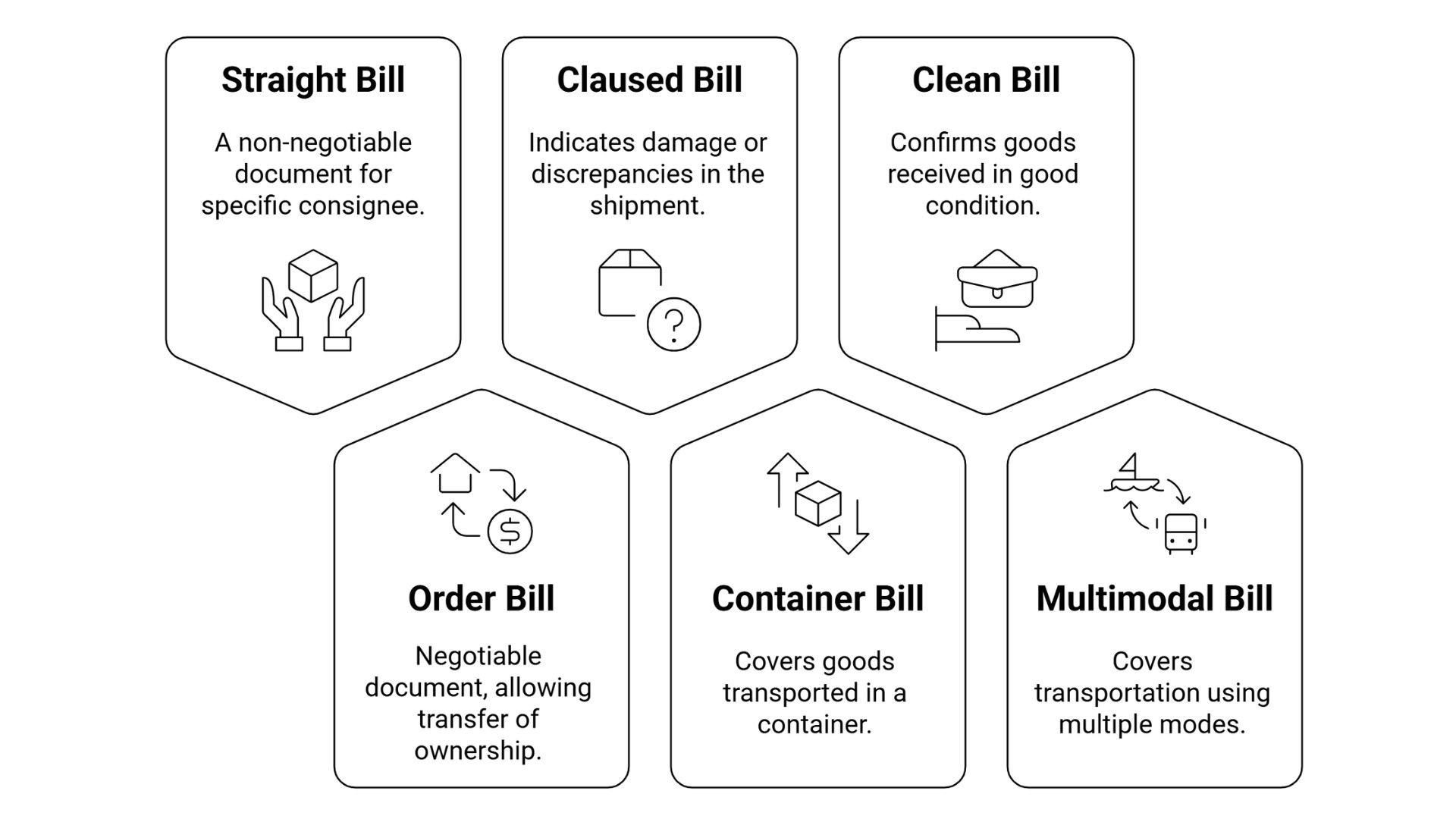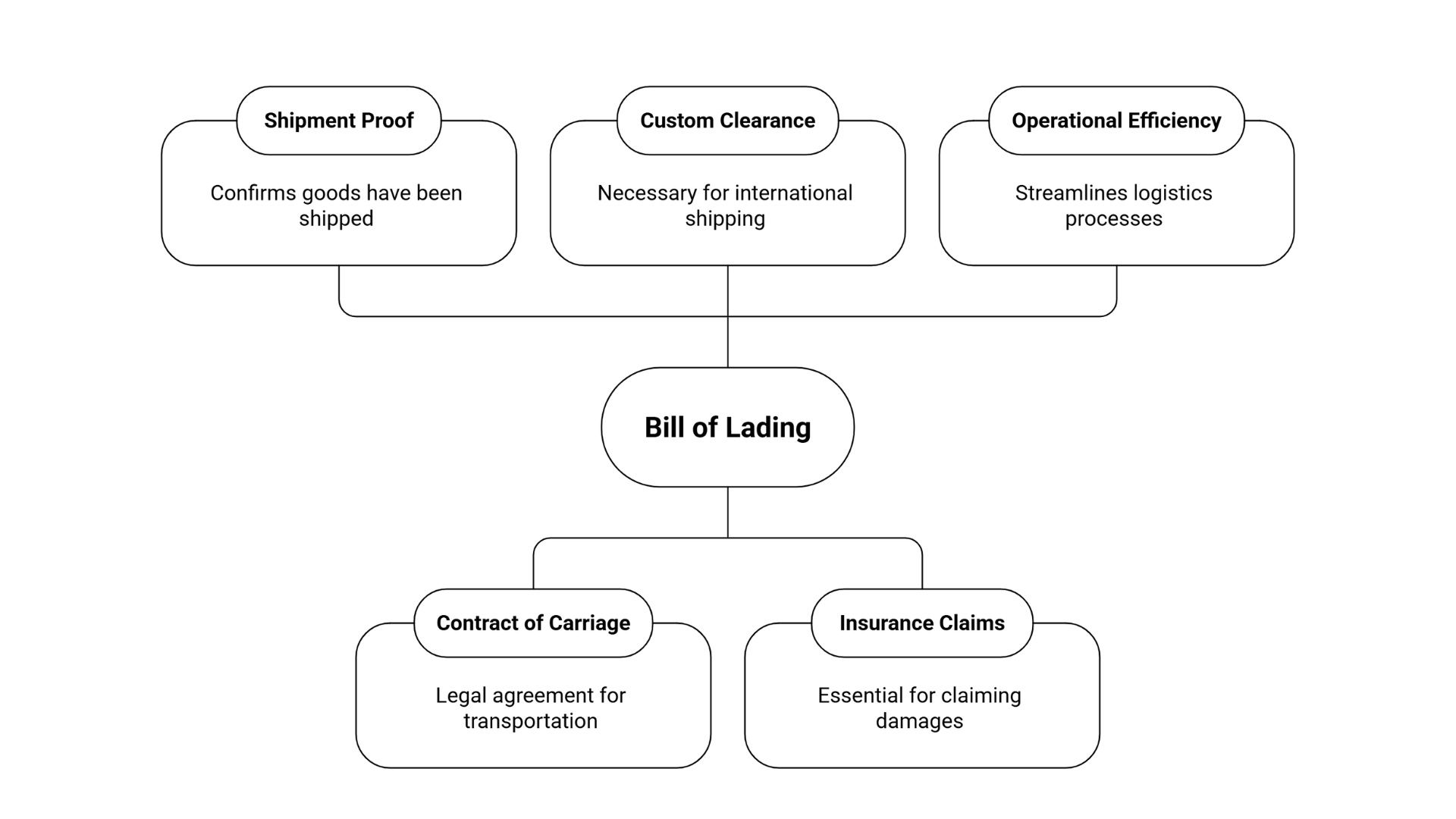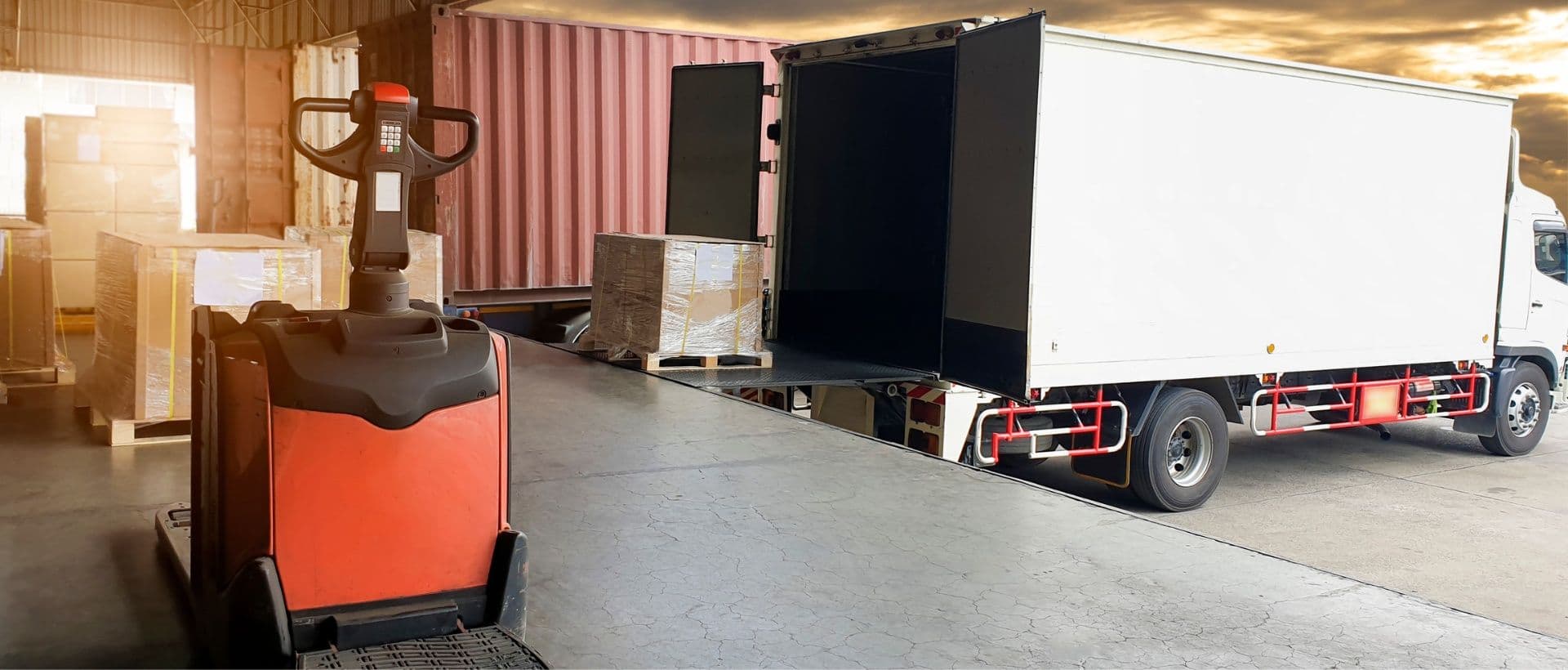
Research indicates that nearly 80% of goods are transported to their destinations by sea. A bill of lading (BOL) plays a crucial role in shipping goods over sea. The carrier issues its legal document to the shipper, detailing the goods received, their condition, quantity, and other relevant information. It even serves as a contract of carriage and a document of title. Buyers cannot claim their cargo, and banks will not release payment without a bill of lading.
What is A Bill of Lading?
A bill of lading is a legal document used in the supply chain and logistics industry. The transport company issues the bill of lading. The legal document lists all the details about the goods, including the type and amount of goods transported to their destination, along with other information. The documents ensure that goods are transported safely and efficiently from the origin to the destination.
Different Types Of Bill Of Lading

A bill of lading can be of various types. Each type suits a specific business type and its requirements. Choosing the correct bill ensures smooth goods handling and reduces supply chain risks.
1. Straight Bill Of Lading
A straight bill of lading, also known as a non-negotiable bill of lading, is a legal document that outlines all the terms and conditions of standard shipping and is assigned only to a trusted and known consignee.
2. Order Bill of Lading
An order bill of lading is a negotiable bill of lading. Here, ownership of the goods is transferred by endorsing or handing over the bill. This is particularly useful in International trade.
3. Claused Bill Of Lading
The carrier issues the claimed BOL, mainly when it receives goods in damaged condition. This legal document protects the carrier from future claims.
4. Container Bill Of Lading
The carrier lists the details of the container, seal number, and the goods received in the BOL and issues it to the shipper. This type of legal document is particularly useful in International trade.
5. Clean Bill Of Lading
The carrier issues the clean BOL when it receives goods in absolute good condition.
6. Multimodal Bill Of Lading
The carrier issues the multimodal BOL if it receives shipments that are being transported through two to three modes.
Who Needs A Bill Of Lading?
- Shipper: The bill of lading serves as proof for the shipper that the carrier has received the goods or products.
- Carrier: The carrier issues the BOL to the shipper to protect themselves legally. The airline clearly states in the legal documents the nature and number of items it is transporting to the consignee.
- Consignee: The consignee requires the legal documents to claim ownership of the goods upon arrival at the port of destination.
- Custom Authorities: Customs authorities require a BOL to verify shipment details.
Purpose And Importance Of A BOL

A bill of lading is one of the most important legal documents during shipping.
- Shipment Proof: The bill of lading details the type of goods transported, quantity, and the condition in which it is being shipped. This legal document acts as evidence that the carrier has received from the shipper.
- Contract Of Carriage: The bill of lading also serves as a contract of carriage, which means it outlines specific terms and conditions under which the carrier will transport goods to the consignee.
- Custom Clearance: The bill of lading contains all the essential information which are necessary for goods release at the port.
- Insurance Claims: The documents can be utilized to claim insurance for the damaged goods.
- Operational Efficiency: The legal document ensures the operational efficiency of the entire shipping process by listing all the instructions.
Bill Of Lading Form Explained
Here is a list of the components in the bill of lading.
- Shipper Details: This section details the name, address, and contact details of the shipper, i.e., the party that is transporting the goods.
- Consignee Information: This section details the name and address of the consignee. It can be either a particular individual or a Company. Listing all the necessary information about the consignee ensures that the goods get delivered to the correct address.
- Carrier Details: This section highlights the name and address of the carrier. The carrier is responsible for transporting goods to the consignee.
- Goods Description: This section is one of the most crucial sections in the bill of lading. It details the type of goods, quantity, special handling instructions, dimensions, and many other relevant details. Accurate product or goods decryption is necessary during insurance or during delivery.
- Origin And Destination: The Bill of Lading details the address of the shipper and the address of the consignee clearly. This highlights the origin and destination of the shipping process.
- Shipping Terms: This section highlights the terms and conditions between the shipper and consignee. It includes transit insurance, freight charges, and many more.
- Shipping Date: It includes the date on which the carrier has received goods from the shipper.
- Signature: The shipper finally signs the legal document.
Bill Of Lading Tracking – How It Works
- The carrier issues a tracking number, typically listed on the bill of lading.
- Most shipping and logistics companies have online tracking numbers. They can use that number and check the shipment details.
- The details can include container location, estimated delivery dates, customs clearance updates, and many more.
- Some carriers provide updates on the container location and estimated delivery via SMS or email.
Common Mistakes To Avoid When Using A Bill Of Lading
- Errors in the shipper's or consignee's address or contact number on the bill of lading can cause delivery issues.
- Mistakes in the quantity or weight of goods can lead to customs problems or cause a delay in delivery.
- Selecting the incorrect bill of lading type can negatively impact the payment or transfer of ownership.
- Forgetting the signature of the carrier in the bill of lading will not make it legally valid.
- Losing the original bill of lading can cause delays in cargo delivery.
Final Words
A bill of lading is a legal document that plays a crucial role in the shipping of goods. There are various types of bills of lading, and each serves a unique purpose. The carrier should choose the proper bill of lading and issue it to the shipper.


